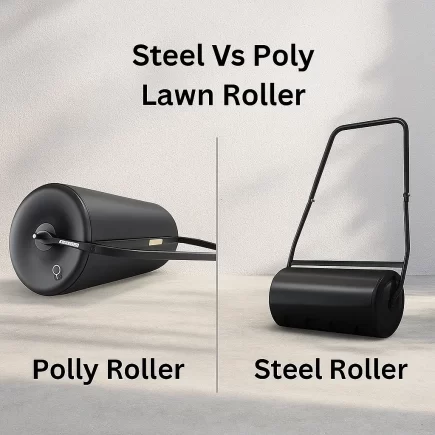Greenhouses provide a perfect controlled environment for plants to grow and create the ideal setting for pests to thrive. A pest-free greenhouse is essential to cultivating healthy, vibrant plants. While chemical pesticides are often seen as quick fixes, organic pest control offers a sustainable solution that doesn’t harm the environment or the plants. We will guide you through the process, offering practical advice, product recommendations, and expert tips to make your greenhouse pest-free and sustainable.

Preventive Measures: The First Line of Defense
While managing pests once they’ve already infested your greenhouse is important, prevention is the most effective strategy. Here are some key preventive measures to help reduce the risk of pest infestations in your greenhouse.
1. Keep Your Greenhouse Clean
A clean greenhouse is less likely to attract pests. Regularly remove dead plants, fallen leaves, and weeds that can harbor pests. Clean all tools, pots, and containers before bringing them into the greenhouse to prevent introducing pests.
2. Regular Plant Inspections
Monitoring your plants regularly is crucial in identifying any pest problems early. Check the undersides of leaves, the stems, and the soil for any signs of infestation. Early detection makes pest management much easier.
3. Proper Watering and Ventilation
Pests love humid environments, which is why maintaining proper watering practices and ensuring adequate ventilation are essential. Overwatering can create a perfect environment for pests like aphids and mealybugs. Ensure your greenhouse has proper air circulation to prevent conditions that attract pests.

Natural Pest Control Methods
Once pests are detected, it’s time to act. There are numerous natural, organic solutions available to manage and control pests in your greenhouse. These methods are both effective and eco-friendly.
1. Insecticidal Soaps and Oils
Insecticidal soaps and oils are two of the most commonly used organic pesticides. These products work by suffocating pests or disrupting their feeding and reproductive processes. Here are the most popular options:
Neem Oil:
Neem oil is derived from the seeds of the neem tree and is a powerful insecticide. It works by disrupting the hormonal systems of pests, preventing them from feeding, mating, or growing. Neem oil is safe for use on most plants and can be used to control a variety of pests, including aphids, whiteflies, and spider mites.
How to Apply:
- Mix neem oil with water according to the instructions on the label.
- Spray the solution directly onto the affected areas, ensuring full coverage.
- Repeat the application every 7-10 days for best results.

Horticultural Oil:
This oil is made from refined petroleum products and suffocates insects on contact. It’s an excellent choice for controlling pests like aphids, whiteflies, and scale insects.
How to Apply:
- Dilute the oil as per instructions and spray it on the foliage.
- Apply during cooler times of the day, such as early morning or late evening, to avoid plant burn.

2. Homemade Remedies
Many gardeners prefer making their natural pest control solutions at home. These remedies are often made from simple, everyday ingredients, making them an affordable and safe option.
Garlic Spray:
Garlic is a potent natural pest repellent. By crushing garlic cloves and mixing them with water, you can create a spray that helps deter pests like aphids, thrips, and spider mites.
How to Make and Apply:
- Blend 4-5 garlic cloves with water and strain the mixture.
- Pour it into a spray bottle and apply it to the leaves of affected plants.

3. Sticky Traps
Sticky traps are a simple yet effective method for controlling flying pests like whiteflies, fungus gnats, and fruit flies. These traps are coated with a non-toxic adhesive that attracts and captures pests, preventing them from reproducing.
How to Use:
- Hang yellow or blue sticky traps around your greenhouse at plant height.
- Replace the traps regularly to ensure maximum effectiveness.
Encouraging Beneficial Insects
One of the most natural ways to control pests is by introducing their predators. Beneficial insects help maintain a healthy balance in your greenhouse by preying on harmful pests. Let’s look at some of the most effective beneficial insects:
1. Ladybugs
Ladybugs are one of the most well-known beneficial insects in the garden. They feed on aphids, mealybugs, and other soft-bodied pests, making them a great addition to your greenhouse.
How to Introduce:
- Purchase ladybugs from a reputable supplier.
- Release them at night to ensure they stay within your greenhouse.
- Provide food sources like nectar-rich flowers to keep them around.

2. Lacewings
Lacewing larvae are voracious predators of aphids, thrips, and mealybugs. Their larvae, known as “aphid lions,” consume large numbers of pests, making them an effective biological control agent.
How to Introduce:
- Buy lacewing eggs or larvae and introduce them to the plants that are infested.
- Avoid using insecticides that could harm lacewings.

3. Predatory Mites
Predatory mites are natural predators of spider mites, thrips, and other harmful insects. These mites feed on the eggs and larvae of pests, keeping their populations in check.
How to Introduce:
- Purchase predatory mites and release them directly onto infested plants.
- Ensure proper humidity and temperature to support the mites’ survival.
Biological Control Methods
In addition to introducing beneficial insects, you can also use biological control agents like nematodes and fungi to fight pests. These methods target specific pests and are highly effective when used correctly.
1. Nematodes
Beneficial nematodes are microscopic worms that live in the soil. Certain species target pests like root aphids, fungus gnats, and other soil-dwelling pests.
How to Use:
- Apply nematodes to the soil according to package instructions.
- Water the soil well before and after application to ensure the nematodes can move freely through the soil.

2. Beneficial Fungi
Beneficial fungi, such as Beauveria bassiana, are used to control pests like aphids, whiteflies, and spider mites. These fungi infect and kill pests without harming your plants.
How to Use:
- Apply beneficial fungi to your plants when pests are present.
- Follow the manufacturer’s instructions for the best results.

Physical Barriers and Mechanical Pest Control
In addition to natural pesticides and beneficial insects, physical barriers and mechanical methods are essential in pest management. These approaches help reduce the number of pests in your greenhouse, particularly those that are difficult to control through chemical or biological means.
1. Mesh Screens and Barriers
Mesh screens and physical barriers are a simple yet effective way to prevent pests from entering your greenhouse. By covering vents, windows, and doorways with fine mesh, you can block larger pests, like rodents and grasshoppers, from entering.
How to Use:
- Install mesh screens on vents and windows to keep pests out while allowing for proper ventilation.
- Use insect-proof mesh on doors and openings to prevent pests like whiteflies, aphids, and other small insects from entering.
- Ensure that all edges are sealed tightly to prevent even the smallest pests from slipping through.
Mesh barriers are a great preventative measure and are especially effective for greenhouses located in areas with a lot of outdoor pests. By maintaining proper airflow while blocking larger insects, you can keep your greenhouse environment pest-free.

2. High-Pressure Hose
A high-pressure hose can be used to physically remove pests from plants. This method is particularly effective against pests like aphids, spider mites, and whiteflies, which tend to cluster on the undersides of leaves.
How to Use:
- Set the hose to a moderate pressure setting to avoid damaging plant tissue.
- Hold the hose close to the affected plant and spray the undersides of leaves and stems.
- Repeat the process every 3-4 days until pests are under control.
This mechanical method is ideal for mature plants that can withstand the water pressure. It works well for knocking pests off the plants, especially if they haven’t burrowed deeply into the tissue. This approach also helps clear away dust and debris that might attract other pests.

Sustainability and Environmental Impact
One of the most significant advantages of organic pest control is its positive impact on the environment. Unlike chemical pesticides, organic methods do not leave harmful residues that can contaminate the soil, water, or air. By using eco-friendly solutions, you can create a balanced, sustainable greenhouse environment that supports biodiversity and minimizes harm to the ecosystem.
The Role of Companion Planting and Crop Rotation
Companion planting and crop rotation are two natural pest control strategies that contribute to a sustainable and healthy greenhouse environment. Both practices help maintain plant health and reduce the risk of pest infestations.
- Companion Planting: By planting certain crops together, you can naturally deter pests or attract beneficial insects. For example, basil can repel aphids when planted next to tomatoes, while marigolds can deter nematodes. Planting a variety of flowers, herbs, and vegetables can help create a balanced ecosystem within the greenhouse.
- Crop Rotation: Crop rotation involves planting different types of crops in different areas of the greenhouse each season. This helps break the life cycle of pests that target specific plant species. It also improves soil health by reducing the buildup of soil-borne diseases and pests.

Key Benefits of Companion Planting and Crop Rotation:
- Reduces Pest Populations: By attracting beneficial insects and deterring pests, these practices naturally manage pest populations.
- Improves Soil Health: Rotating crops and using natural fertilizers like compost enhance soil structure and fertility, making plants less susceptible to pests.
- Supports Biodiversity: Planting a variety of species in your greenhouse supports a diverse ecosystem, which helps maintain a healthy environment for both plants and beneficial insects.
Organic pest control is essential for any Greenhouse gardener who wants to maintain a healthy, thriving environment without relying on harmful chemicals. From insecticidal soaps and neem oil to encouraging beneficial insects and creating physical barriers, there are numerous organic methods available to keep pests at bay. By implementing preventive measures, using natural remedies, and adopting long-term pest management strategies like Integrated Pest Management, you can ensure that your greenhouse remains pest-free for years to come.
FAQs
1. How can I prevent pests from entering my greenhouse?
Installing fine mesh screens on vents, windows, and doors helps block pests from entering while allowing for ventilation. This physical barrier prevents larger pests like rodents and grasshoppers from infiltrating your greenhouse. Ensure all seals are tight to avoid any gaps.
2. Are there natural predators for spider mites in the greenhouse?
Yes, predatory mites are an excellent natural control for spider mites. These beneficial insects feed on the spider mites’ eggs and larvae, helping to keep their population in check without harming your plants.
3. How often should I apply neem oil for effective pest control?
Neem oil should be applied every 7-10 days to ensure effective control of pests like aphids, whiteflies, and spider mites. Regular applications disrupt the pests’ feeding and reproductive cycles, helping to keep your greenhouse pest-free.
4. Can I use garlic spray for all types of pests?
Garlic spray is effective against pests like aphids, thrips, and spider mites but may not work for all pest species. It’s a good option for smaller infestations or as a preventative measure for specific pests in your greenhouse.




























